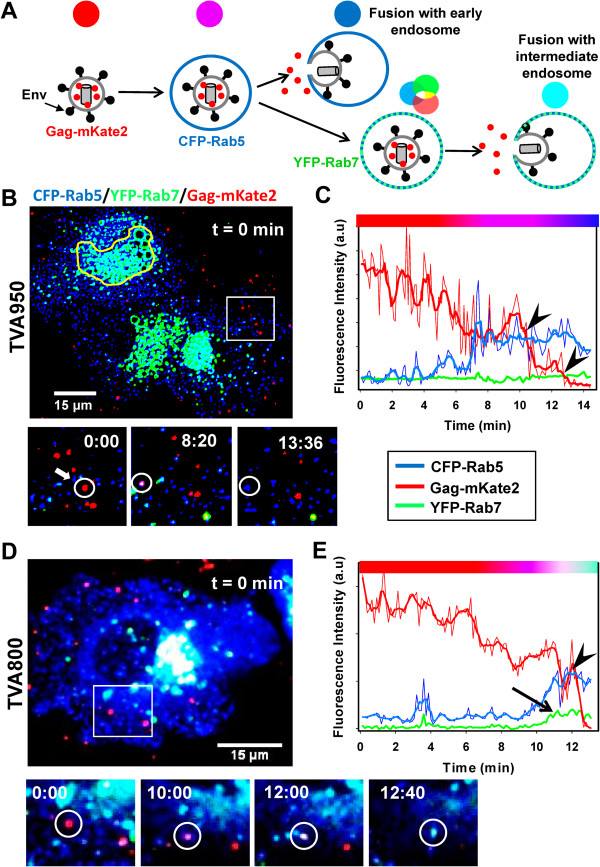Figure 1.

ASLV-A trafficking and fusion with early and intermediate endosomes. (A) Illustration of ASLV-A (Gag-mKate2-labeled, red) fusion with early endosomes (CFP-Rab5+, blue) and intermediate endosomes (YFP-Rab7+, green). Changes in pseudocolor upon virus entry and fusion with these endosomes are illustrated by small circles. (B-E) Fusion of Gag-mKate2-labeled ASLV-A (red) with TVA950 (B, C) and TVA800 (D, E) cells co-transfected with CFP-Rab5 (blue) and YFP-Rab7 (green). Viruses were pre-bound to cells in the cold and their internalization and fusion were initiated by shifting to 37°C. Panels B and C illustrate ASLV-A fusion with an early endosome of a TVA950 cell and panels D and E show fusion with an intermediate endosome of a TVA800 cell. The boxed areas in B and D are enlarged in the image panels below. Yellow contour in B marks highly fluorescent perinuclear area. (C, E) The fluorescence intensities of viral and endosomal markers as a function of time were obtained by single particle tracking. The mKate2 channel was used to track particles before they colocalized with CFP-Rab5, and the CFP channel was used for particle tracking afterwards. The gradual decrease of the mKate2 signal preceding the final drop to the background level (panels C and E) was likely caused by the particle deviation from the focal plane, but not by photobleaching (see Additional files 4 and 5: Figures S4 and S5). mKate2 release is marked by arrowheads in C and E. The viral content release in C occurred in two steps, suggesting transient closure of a nascent fusion pore [22,34]. An arrow in panel E marks the appearance of the YFP-Rab7 signal. The colored horizontal bars above the graphs show the pseudocolor changes associated with virus colocalization and fusion with early or intermediate endosomes.
